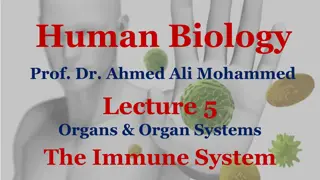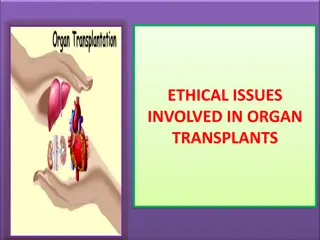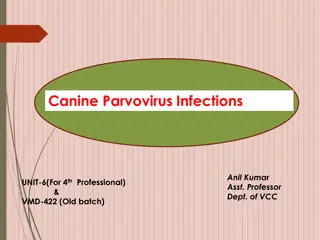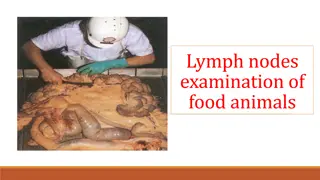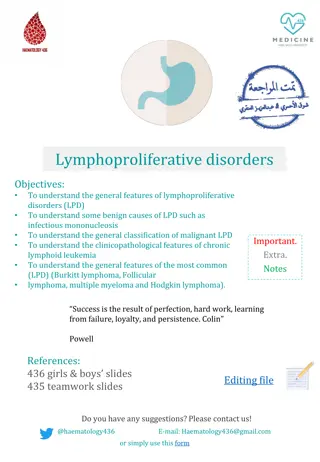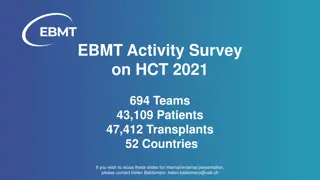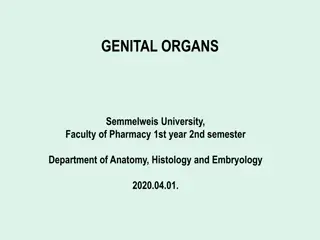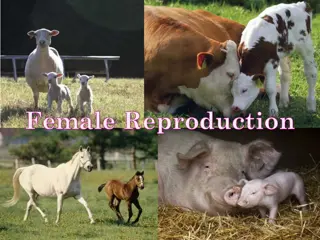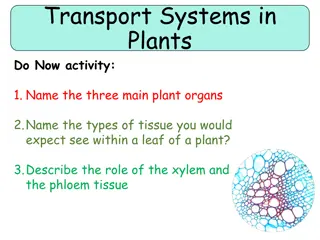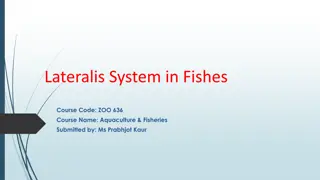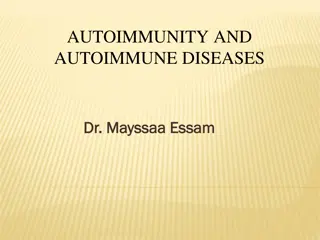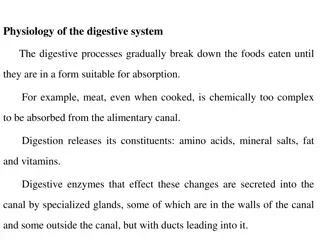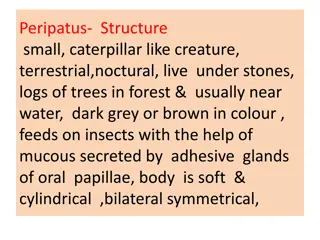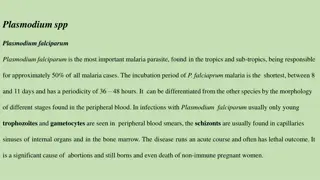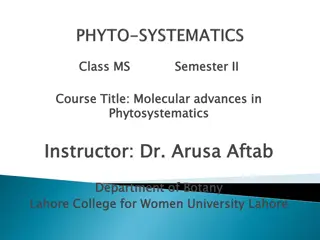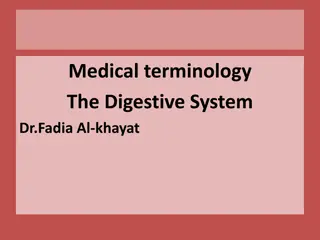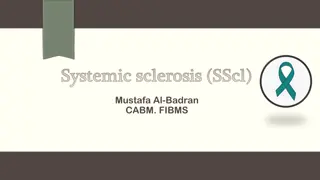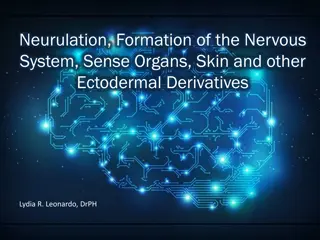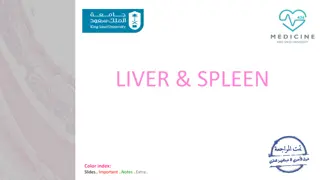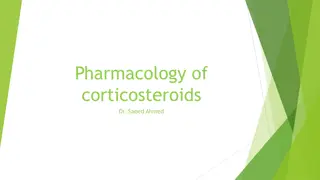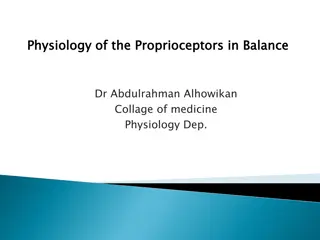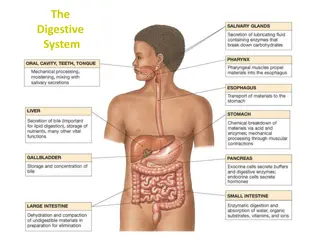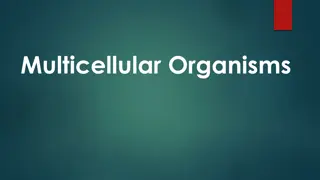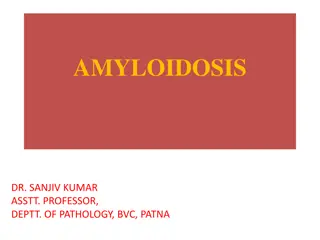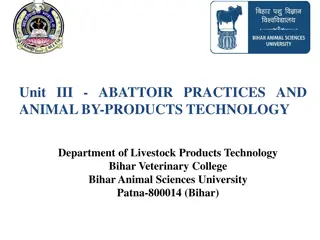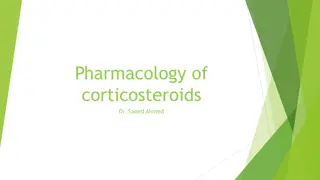Overview of Lymphoid Organs in Finfish and Shellfish
Lymphoid organs play a crucial role in the defense mechanisms of finfish and shellfish by generating immune cells. Different types of fish vary in their lymphoid organ structures, with jawless fish relying on lymphoid tissue within other organs for immune cell production. Cyclostomes, like hagfish and lamprey, have unique lymphohemopoietic foci, while cartilaginous fishes possess specialized organs akin to mammalian bone marrow. Chondrostean fish, such as sturgeons, exhibit distinctive sites for granulocyte production and well-developed spleens for lymphocyte storage.
Download Presentation

Please find below an Image/Link to download the presentation.
The content on the website is provided AS IS for your information and personal use only. It may not be sold, licensed, or shared on other websites without obtaining consent from the author. Download presentation by click this link. If you encounter any issues during the download, it is possible that the publisher has removed the file from their server.
E N D
Presentation Transcript
LYMPHOID ORGANS OF FINFISH & SHELLFISH Mr. Bhartendu Vimal Guest Faculty Assistant Professor College of Fisheries, Kishanganj BASU, Patna
Introduction The lymphoid organs involve in defense mechanism through generating immune cells system consists of those organs which Lymphoid organs vary by type of fish In the jawless fish, true lymphoid organs are absent These fish rely on regions of lymphoid tissue within other organs to produce immune cells For example, macrophages and plasma cells are produced in the anterior kidney (or pronephros) and some areas of the gut (where granulocytes mature)
Cyclostomes were able to respond but poorly to T- dependent and T-independent antigens Neither hagfish nor lamprey possess a thymus and secondary lymphoid organs which consist of lympho-hemopoietic tissues morphologically equivalent to the bone marrow In lampreys larval form ammocoetes, the main lymphohemopoietic foci include the thyphosole, a fold of the midgut formerly described as primitive spleen, the nephric fold and adipose tissue
These organs resemble primitive bone marrow in hagfish But, in hagfish only a single population of granulocytes reported (Tomonaga et al. 1973) and plays a role in defense mechanism In contrast to the hagfish, different subpopulations of granulocytes are distinguishable in lampreys (Rowley et al. 1988) and play a role in defense mechanism Cartilaginous fishes have a more advanced immune system. They have specialized organs that are unique to chondrichthyes the epigonal organs (lymphoid tissue similar to mammalian bone marrow) that surround the gonads
the Leydig's organ within the wall of esophagus Microscopic general image of the ovaric epithelium (arrow), most of them intermingled with the epigonal organ (OE)
These organs house typical immune cells (granulocytes, lymphocytes and plasma cells) They also possess an identifiable thymus and a well-developed spleen (their most important lymphoid organ) where various lymphocytes, plasma cells and macrophages develop and are stored Chondrostean fish (sturgeons, paddlefish and bichirs) possess a major site for the production of granulocytes within a mass that is associated with the meninges Their heart is frequently covered with tissue that contains lymphocytes, reticular cells and a small number of macrophages.
LYMPHOID organs OF FINFISHES In all modern fish including both chondrichthyes and oestichthyes, thymus, spleen and somewhat develop gut lymphoid aggregates appear Lymphoid organ system of finfishes contains lymphoid organs and their functions Lymphoid system of finfishes is mainly grouped into two groups The primary lymphoid organs: Thymus and Anterior kidney The secondary lymphoid organs: Kidney, spleen, epigonal organs and mucosa associated lymphoid tissue Besides these organs, liver, skin, intestine and heart are also important organs take part in the defense
THE THYMUS -The thymus plays a pivotal role in the development of the adaptive immune system -It is a paired organ situated in the dorsolateral region of the gill chamber close to the opercular cavity -the histology of thymus varies within the species -may start developing as early as 24 hrs after fertilization -as development starts the cells gradually differentiate into thymocytes and epithelial cell -the major site of T-cell development
-unlike mammals, the outer cortex and inner medulla is poorly separated in many fish species -covered by the modified stratified epithelium of the gill chamber -the thymocytes are separated by single layer of epithelial cells from the water environment -first organ to be lymphoid during histogenesis and aquires mature lymphocytes -thymocytes appear in carp on day 4 post fertilization -by day 5, immature and intermediate stage lymphocytes are found -on day 10, B and T lymphocytes appear during organogenesis
-in rainbow trout, thymus appears before hatching and becomes fully lymphoid at the time of hatching -In marine fishes - head kidney, spleen, and thymus -small lymphocytes appear first in thymus and later in head kidney & spleen -seems to originate from haematopoietic stem cells migrating from the head region of the kidney
Anterior Kidney Like other vertebrates, the kidney is situated retroperitoneally and exterior to the dorsal wall or body cavity Anatomy varies from species to species Broadly classified into two parts : head or anterior kidney or pronephros posterior or trunk kidney or opisthonephros The anterior kidney losses its excretory role once the fish matures It contains only haematopoietic tissue
Predominantly a lympho-myeloid compartment Lymphoid precursor tissue and mostly the generation and maturation of B lymphocytes occur in this tissue Act as both primary as well as secondary lymphoid organs Serves as a lymph node analogue, important in the induction and elaboration of immune responses Indicate the importance of innate immune system during early stage of development plays important role in non-specific immunity and the clearance of debris and damaged cells
THE SECONDARY LYMPHOID ORGANS Provide structural organization for trapping and processing them in suitable ways for the cell that are capable of reacting to them Include spleen, Gut Associated Lymphoid Tissue (GALT) and mucosal immune system (MIS), epigonal organs in elashmobranch SPLEEN: The major peripheral lymphoid organ of all gnathostomus vertebrates Last organ to develop during histeogenesis of the lymphoid organs of teleost Has a fibrous capsule and small tubercles extend into the parenchyma- divide spleen into red and white pulp White pulp poorly developed & contains melano-macrophages Plays role in both haematopoiesis and immune reactivity
When the filtration happen, the foreign substances are retained in the ellipsoidal wall and subsequently taken up by macrophages surrounding the vessels These cells then migrate into melano-macrophage centres Melano-macrophage centres (MMCs)- large nodule of macrophage aggregates MMCs also found in intestinal submucosa, thymus, gill, brain and gonads but mostly in liver tissue It has been described that immunological maturity of fish is attained after development of MMCs
FUNCTIONS OF MMCs: Trapping of immune complex and production of high level of antibodies Processing of antigens and prolonged retention of antigens As bactericidal activity by the pigments such as lipofuscin, haemociderin and ceroid and melanin Deposition of parasitic spores ad resistant bacterial pathogens
Gut Associated Lymphoid Tissue (GALT) All vertebrates contain lymphoid cell isolates in the lamina propria and the intestinal epithelium- Consists of nonencapsulated lymphoid accumulations In all teleosts, diffuse accumulation of lymphoid tissue appear along the gut Associated with specific innate immune activities IgM has been identified in the gut mucus and bile of both chondrichthyes and oestichthyes
MUCOSA-ASSOCIATED LYMPHOID TISSUES (MALT) The mucosal surface of gut, gills and skin are protected by both humoral and cellular defense mechanisms Mucus contains several humoral factors and play role in defense mechanism The wall of the organs is also infiltrated with lymphocytes and other leukocytes
OTHER TISSUES OF IMMUNOLOGICAL IMPORTANCE Liver: Heart: minor role in the defense mechanism reticuloendothelial system- poorly developed- scavenging role Kuffer cells: the liver macrophages endothelial cells have the capacity to take up foreign particle transformed into macrophages
Lymphoid organ in crustaceans Introduction Also called as Oka organ First described in Penaeus orientalis by Oka Identified only in penaeid spp.
Location and Structure Consists of two lobes situated ventero-anterior to hepatopancreas. Lobes are similar and are surrounded by connective tissue capsules. These are connected directly to heart by subgastric artery which supplies hemolymph to them.
Each lobe consists of tubules and the spaces in between which are occupied by hemal sinuses. Lymphoid tubules (LT) consist of central lumen lined with flattened endothelial cells. Next to endothelial lining there are two types of stromal cells.
Functions Involved in immunodefence against foreign materials. Major phagocytic organ in penaeid shrimps. Exerts bacteriostatic effect. Has trapping ability to immobilise foreign material from hemolymph before this material enters the open circulatory system. Major site for viral degradation by forming spheroid cells.



